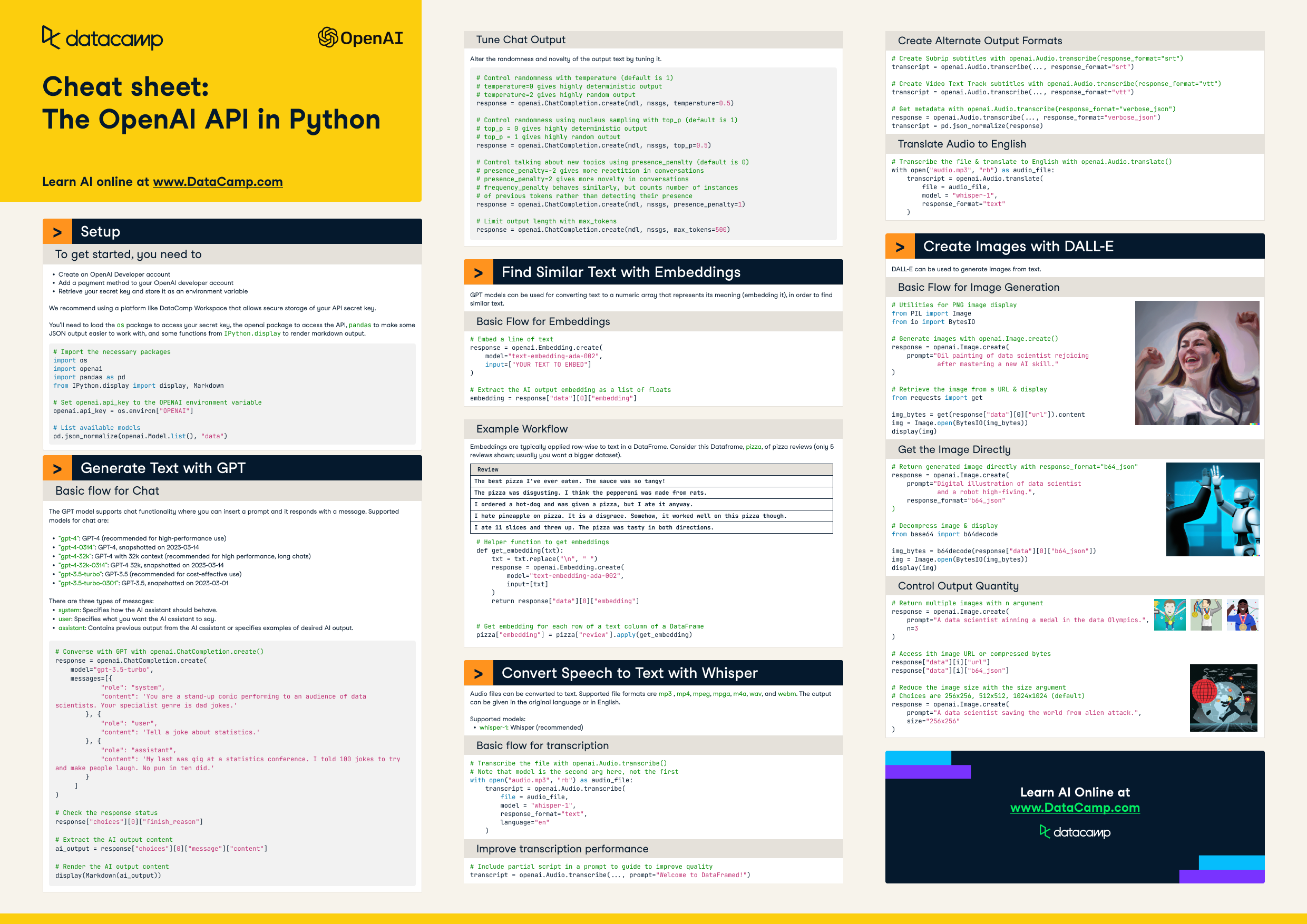The OpenAI API in Python
ChatGPT and large language models have taken the world by storm. In this cheat sheet, learn the basics on how to leverage one of the most powerful AI APIs out there, then OpenAI API.
Apr 2023 · 3 min read
RelatedSee MoreSee More
tutorial
Using GPT-3.5 and GPT-4 via the OpenAI API in Python
In this tutorial, you'll learn how to work with the OpenAI Python package to programmatically have conversations with ChatGPT.
Richie Cotton
14 min
tutorial
Fine-Tuning GPT-3 Using the OpenAI API and Python
Unleash the full potential of GPT-3 through fine-tuning. Learn how to use the OpenAI API and Python to improve this advanced neural network model for your specific use case.
Zoumana Keita
12 min
tutorial
GPT-4o API Tutorial: Getting Started with OpenAI's API
To connect through the GPT-4o API, obtain your API key from OpenAI, install the OpenAI Python library, and use it to send requests and receive responses from the GPT-4o models.
Ryan Ong
8 min
code-along
Getting Started with the OpenAI API and ChatGPT
Get an introduction to the OpenAI API and the GPT-3 model.
Richie Cotton
code-along
Fine-tuning GPT3.5 with the OpenAI API
In this code along, you'll learn how to use the OpenAI API and Python to get started fine-tuning GPT3.5.
Zoumana Keita
code-along
Introduction to Large Language Models with GPT & LangChain
Learn the fundamentals of working with large language models and build a bot that analyzes data.
Richie Cotton
